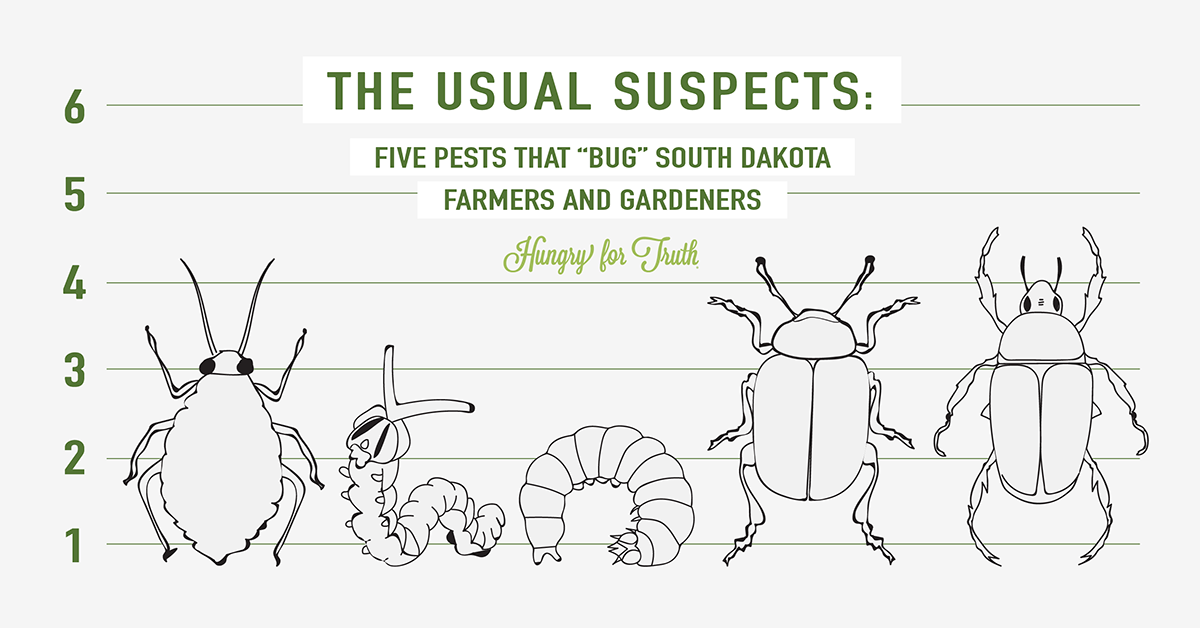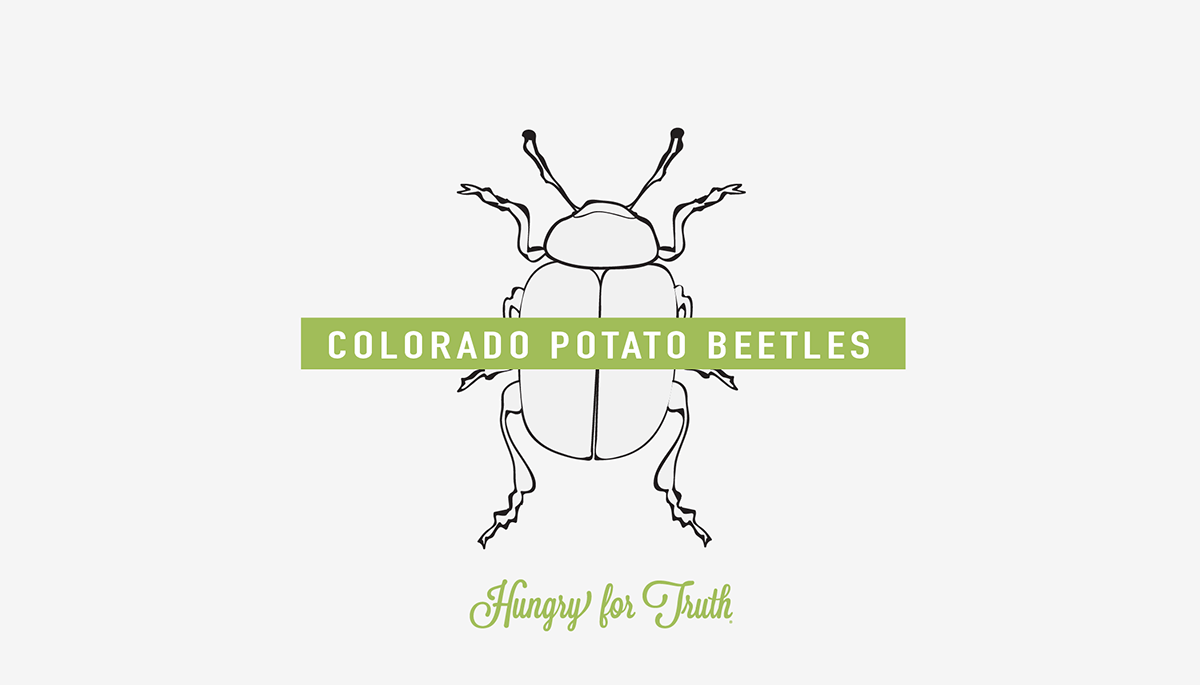The Usual Suspects: Five Pests That “Bug” South Dakota Farmers and Gardeners
In a perfect world, we could plant our crops at the start of summer then sit back and watch them grow. Unfortunately, there are bugs who like eating the plants and food we grow almost as much as we do.
Keeping bugs off our food can be a challenge. Both gardeners and soybean farmers need to learn how to spot pests early to protect plants and keep them healthy. They may use tools like pesticides or good insects, like wasps and lady beetles, to stop the bad guys in their tracks.
Farmers work with university experts to learn how to identify pests and the best ways to control them. Sometimes pesticide applications are necessary. Farmers take classes to become certified to apply pesticides safely, according to label instructions. They also use precision technology in their sprayers to apply exactly the right amount.
Since you might not have quick access to insect experts, we’ve rounded up a list of the top five buggiest garden and field offenders to help you identify them.
Aphids
Identifying features: teardrop shape; may be green, yellow or brown; leave “honeydew” — sugary, liquid drops — behind.
Aphids give new meaning to the saying, “small but mighty.” These tiny critters tend to hang together, and when they do – in colonies of hundreds at a time – they can inflict big-time damage. Aphids suck sap out from the underside of a leaf until plants become droopy. Gardeners should look for them on most fruits, vegetables and flowers. For South Dakota soybean growers, the soybean aphid is a major threat to a healthy harvest.
Caterpillars
Identifying features: larval stage of moths and butterflies; segmented and worm-like.
Caterpillars may have you thinking first of the bright butterflies you love to see in your garden, but some can be a real headache for green thumbs. These pests can chew on leaves and tunnel through fruits in your backyard. Soybean farmers scout for pests like caterpillars on a regular basis so things don’t get out of hand. You should do the same thing in your garden. Check for them daily. If you spot one, remove it by hand and look for any tiny egg clusters to remove or just pluck the whole leaf off.
Cutworms
Identifying features: only active during very early morning and at night; may find them curled up in the soil.
If you’re a gardener, cutworms are the night owl neighbors you wish would move away. They like to chew through stems and flower seedlings. In early summer, these plump pests can gobble up an entire small plant. Home gardeners, we advise picking them out of the soil by hand or delaying planting. South Dakota soybean farmers can carefully apply pesticides to keep cutworms in check.
Colorado Potato Beetles
Identifying features: black and white striped wings/back, orange-spotted head.
These little guys look fun, sporting black and white striped bodies and vibrant orange heads, but they are bad news for your potatoes, tomatoes and eggplants. They’ll strip your garden of its leaves if you don’t take action. A quick spray with neem oil can defend against these pests so you can enjoy those home-grown salads all summer long.
Japanese Beetles
Identifying features: metallic sheen; green head with brown wings and white spots around edges of body.
Unlike lady beetles, which help control garden and farm pests, Japanese beetles leave a mess of sad plants in their wake. They chew on flowers, leaves and even roots. You can keep them in check by giving your plants a shake or spraying them with a soapy pesticide mixture from your local garden shop.
Now that you know how to spot the usual suspects, you can confidently consult your local gardening expert to determine the right plan of action. Here’s a little more info on how farmers safely apply pesticides to prevent these pests from ruining their fields!
Hungry for Truth is an initiative about food and farming funded by the South Dakota soybean checkoff. The goal is to connect South Dakotans with the farmers who grow and raise their food.







